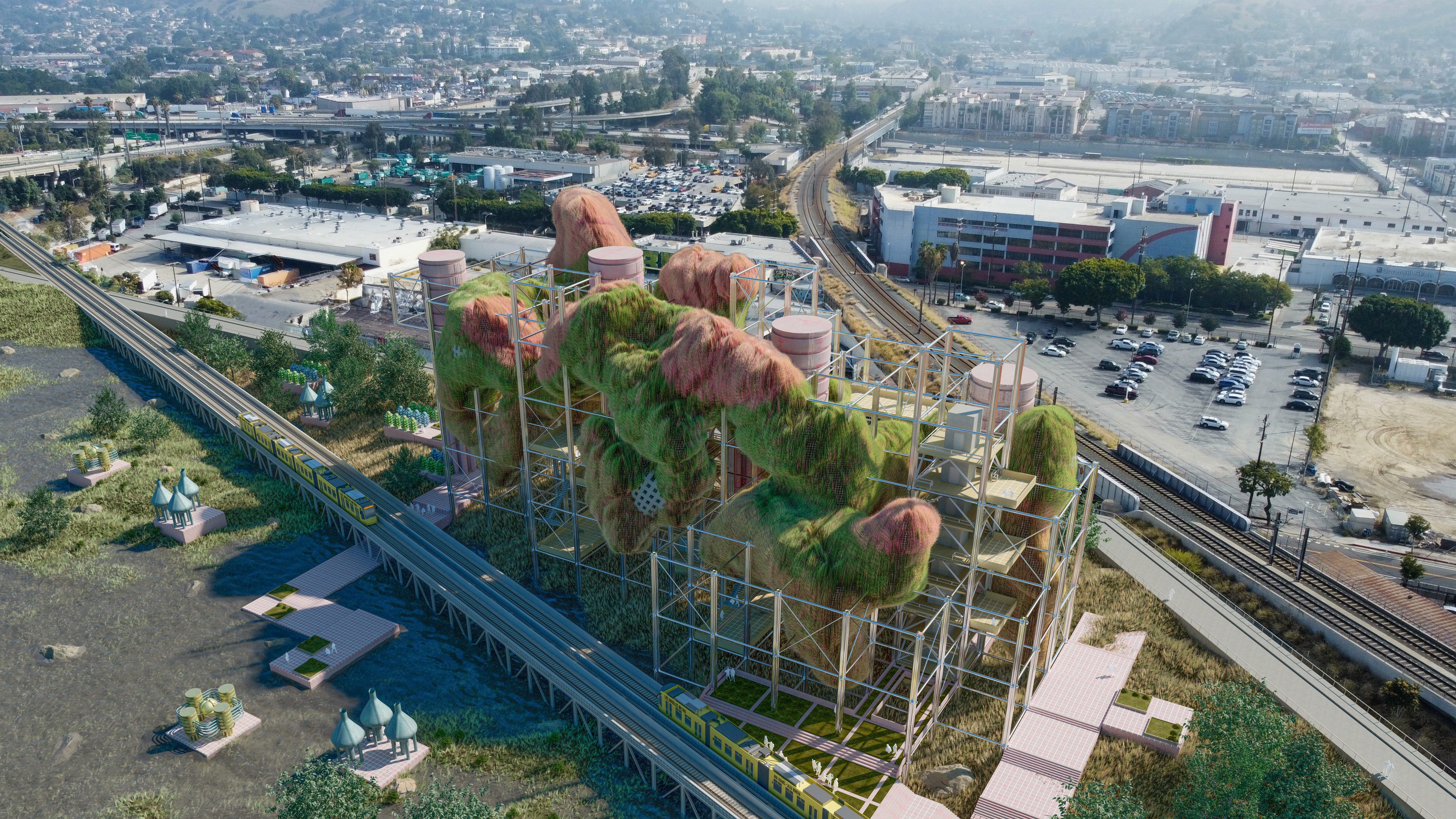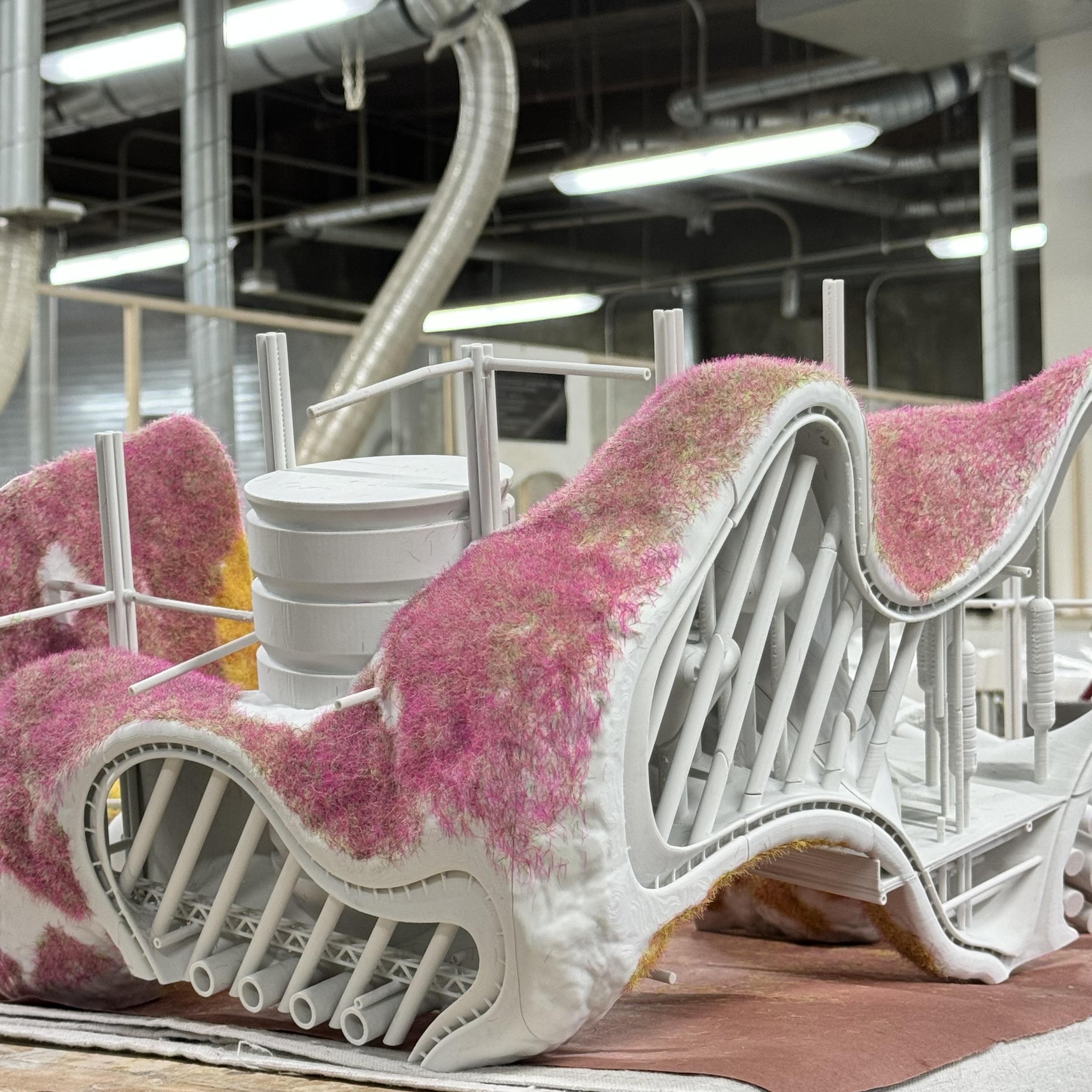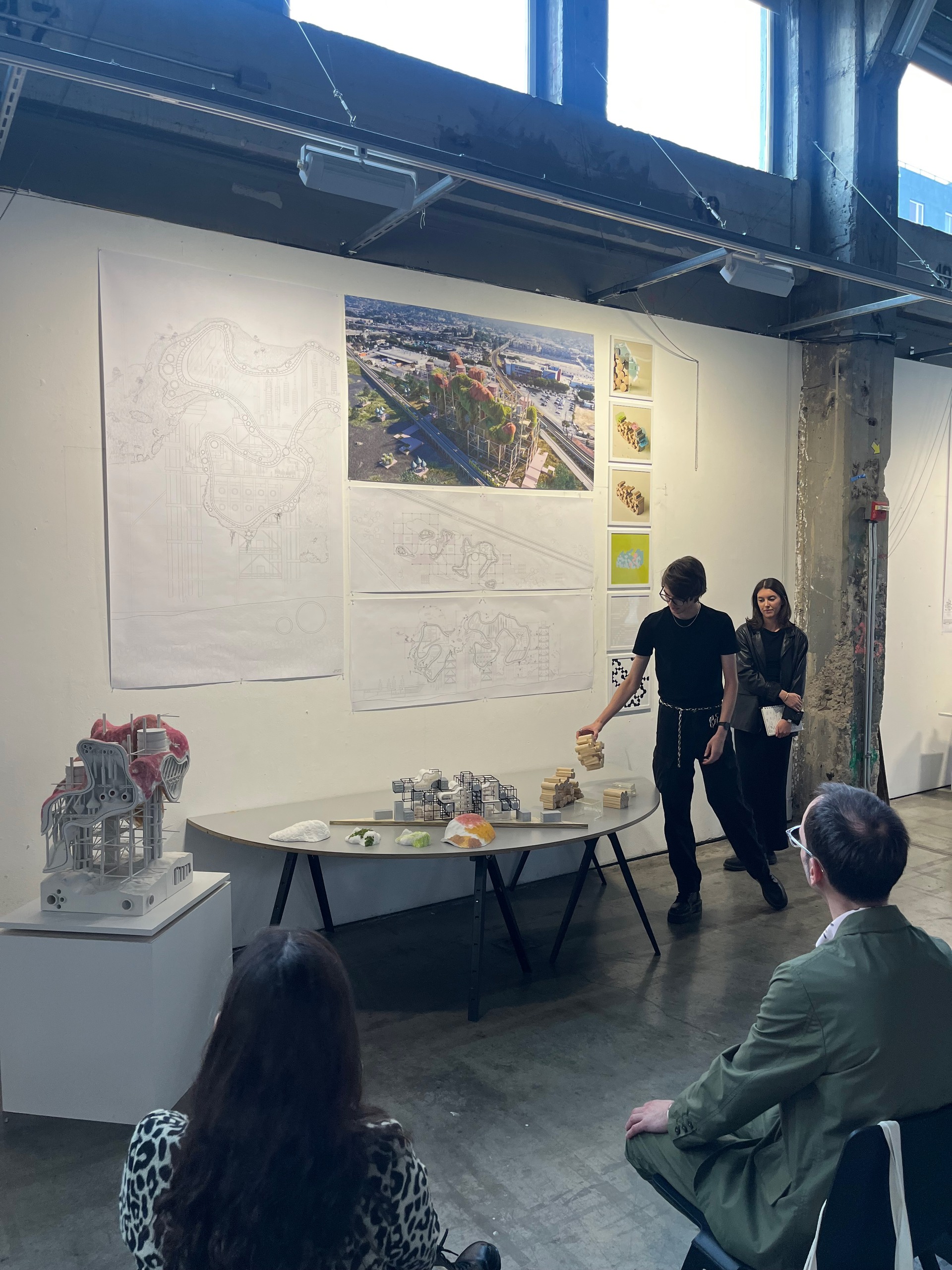
BGSU alumnus' work addressing climate change selected for prestigious international architecture exhibition
Estimated Reading Time:
Alex Borger's 'A Machine for Life' will be displayed at the 19th International Architecture Exhibition in Venice, Italy
By Branden Ferguson
Bowling Green State University alumnus Alex Borger '24 describes himself as a "non-traditional designer." As an architect and artist, his unique creativity has resulted in his work being selected for the 19th International Architecture Exhibition in Venice, Italy, one of the most prestigious architecture exhibitions in the world.
As a student in the architecture and environmental design major at BGSU, Borger was encouraged to use his problem-solving abilities and address challenges in the built environment. Investigating real-world issues and willing to test alternative solutions, Borger created "A Machine for Life."

Alongside his project partner, Ana Adams, “A Machine for Life” stems from the idea of updating an abandoned building in Los Angeles that sits along a flood-prone Los Angeles River. Borger and Adams’ rendering of a 180-foot building is complete with moss and plants covering the building's facade and filtration and water remediation pipes running throughout the interior.
"I wanted to create a structure that would continue to grow even with no humans in the building," said Borger. "The building would be a living structure, continuously providing plants and oxygen to the surrounding area."
As curator of the International Architecture Exhibition, Carlo Ratti noted the fires in Los Angeles, floods in Valencia and Sherpur, droughts in Sicily and Earth's hottest temperature on record in 2024 and invited architects and designers to think outside the box.
"For decades, architecture's response to the climate crisis has been centered on mitigation — designing to reduce our impact on the climate," Ratti said in his curator statement. "That approach is no longer enough. The time has come for architecture to embrace adaptation, rethinking how we design for an altered world."

Addressing climate change, focusing on adaptation and taking place in an altered world, "A Machine for Life" checked every box. Ratti selected Borger's design for the 2025 exhibition, which will be displayed from May 10 to Nov. 23, 2025, at the Giardini, the Arsendale and the Forte Marghera.
"My projects at BGSU were less traditional and focused on 'what ifs' and the future. I would think about climate change, overpopulation and post-carbon designs," said Borger. "Despite my interests being against the normal, my professors encouraged me to do more and inspired me to keep thinking outside the box."
Supported by faculty, Borger also found the program's unique design beneficial to his education.
"I like that BGSU allows architectural students to work and learn alongside construction management students," said Borger. "I was able to combine my creative and conceptual thinking with the technical side of design and construction."
At BGSU, architecture and environmental design students study and work with their peers in construction management, mirroring how the two professions work together in the industry. BGSU is the only higher education institution in Ohio that prioritizes this approach through its School of the Built Environment.

When creating "A Machine for Life," Borger pulled information from his time at BGSU. He looked at what it would take to collect carbon from the ground and water, how he could remediate the soil, and filter the surrounding water of debris and contaminants.
"I logged more than 1,500 hours of work last semester building upon my design, but the initial project was a collection of my research from BGSU," said Borger
Furthering his education at Southern California Institute for Architecture, Borger said having his work displayed in Venice is something he never imagined.
"I remember being a sophomore at BGSU and looking to people like me for inspiration," said Borger. "I now find myself in a position where I would inspire my younger self."
Related Stories
Media Contact | Michael Bratton | mbratto@bgsu.edu | 419-372-6349
Updated: 03/28/2025 08:34AM




